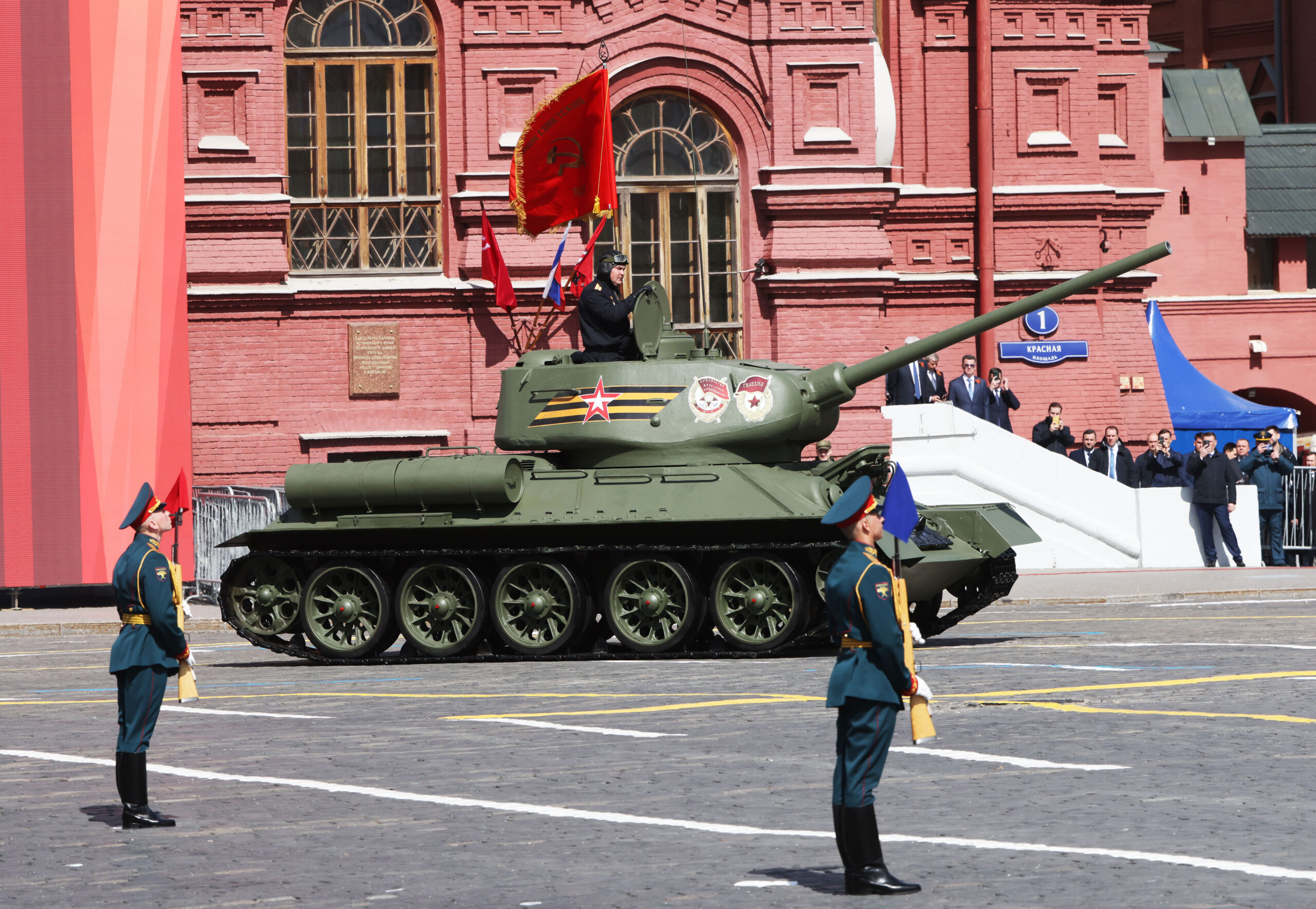Marking the 78th anniversary of the defeat of Nazi Germany, Russia’s Victory Day parade today was a very muted affair, with only one tank — a World War II-era T-84/85 museum piece — present, compared with the massed ranks of more modern tanks and armored fighting vehicles in previous parades.
The traditional patriotic display was heavily influenced by the ongoing war in Ukraine, with veterans from the campaign taking part, but the overall picture was of a greatly scaled-down event when contrasted with those in recent years.

May 9 is marked across Russia as Victory Day, one of the country’s most important public holidays. The main focus is the sacrifices made by Soviet soldiers and civilians in the defeat of Nazi Germany, a victory that came at the cost of around 27 million Soviet citizens.
As expected, Russian President Vladimir Putin used the occasion to double down on the invasion of Ukraine, or “special military operation,” in Kremlin parlance.
Speaking on Moscow’s Red Square, Putin told Russian soldiers that the “whole country is praying for them, while accusing Ukraine’s supporters in the West of “destroying traditional values” and promoting a “system of robbery and violence.”
“Today, civilization is again at a decisive, turning point, a real war has been unleashed against us again,” Putin said in his speech today. “We are proud of the participants of the special military operation. The future of our people depends on you,” he added.
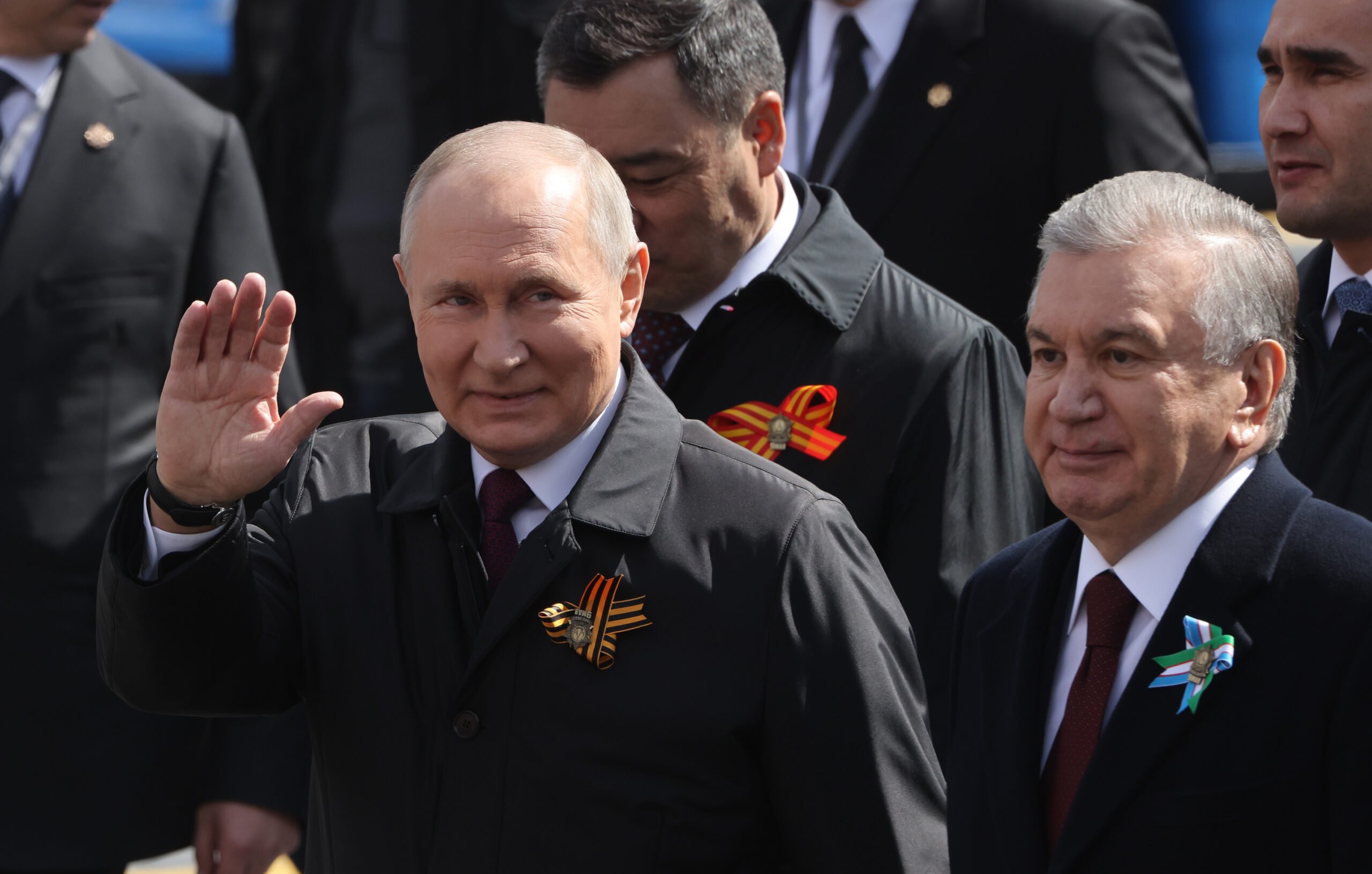
Again, Putin painted his country’s invasion of Ukraine as an ideological battle between Russia and the West, drawing upon supposed historical parallels with World War II.
“The goal of our enemies, and there is nothing new here, is to achieve the disintegration and destruction of our country,” Putin warned.
And while Russian state media said there were more than 500 Russian soldiers who had fought in Ukraine present in the Moscow parade, from a total of around 8,000 troops, the scale of military might that normally accompanies these occasions was not on display this time.
The total number of vehicles involved in the Moscow parade today was reportedly fewer than 80, most open-source accounts putting it even lower, at a little over 50.
Aside from the single T-34/85 that was first to enter Red Square, no tanks were present. Also absent were infantry fighting vehicles and armor operated by the Russian Airborne Forces, of VDV.
As The War Zone has reported in the past, the historical significance of the T-34 series tank means that Moscow has even made efforts to secure additional examples, including buying around 30 T-34/85 tanks in a three-way deal also involving Laos and Vietnam. These tanks were specifically acquired to take part in public parades, like in Red Square, and to be installed as museum pieces, among other uses.
Instead, the rest of the vehicle component consisted of much smaller numbers of lighter and generally less potent equipment, all on wheeled rather than tracked chassis, including examples of the Bumerang and BTR-82 8×8 amphibious armored personnel carriers, VPK Ural and Tigr 4×4 multipurpose all-terrain vehicles, and the Z-STS Akhmat 6×6 armored tactical vehicle.

According to Russian state media, two types of vehicles were making their debut in the parade this year, the Z-STS Akhmat and the AMN-590951 Spartak 4×4 armored tactical vehicle. Although the latter was not immediately identifiable in available video footage, the type is known to have been used in combat in Ukraine since at least the summer of 2022.
In terms of missiles, which traditionally take a prominent place in these parades, available videos suggest that these comprised three Yars road-mobile intercontinental ballistic missiles, six S-400 air defense systems, and six Iskander short-range ballistic missiles. No shorter-range air defense systems were present, in another break from tradition.
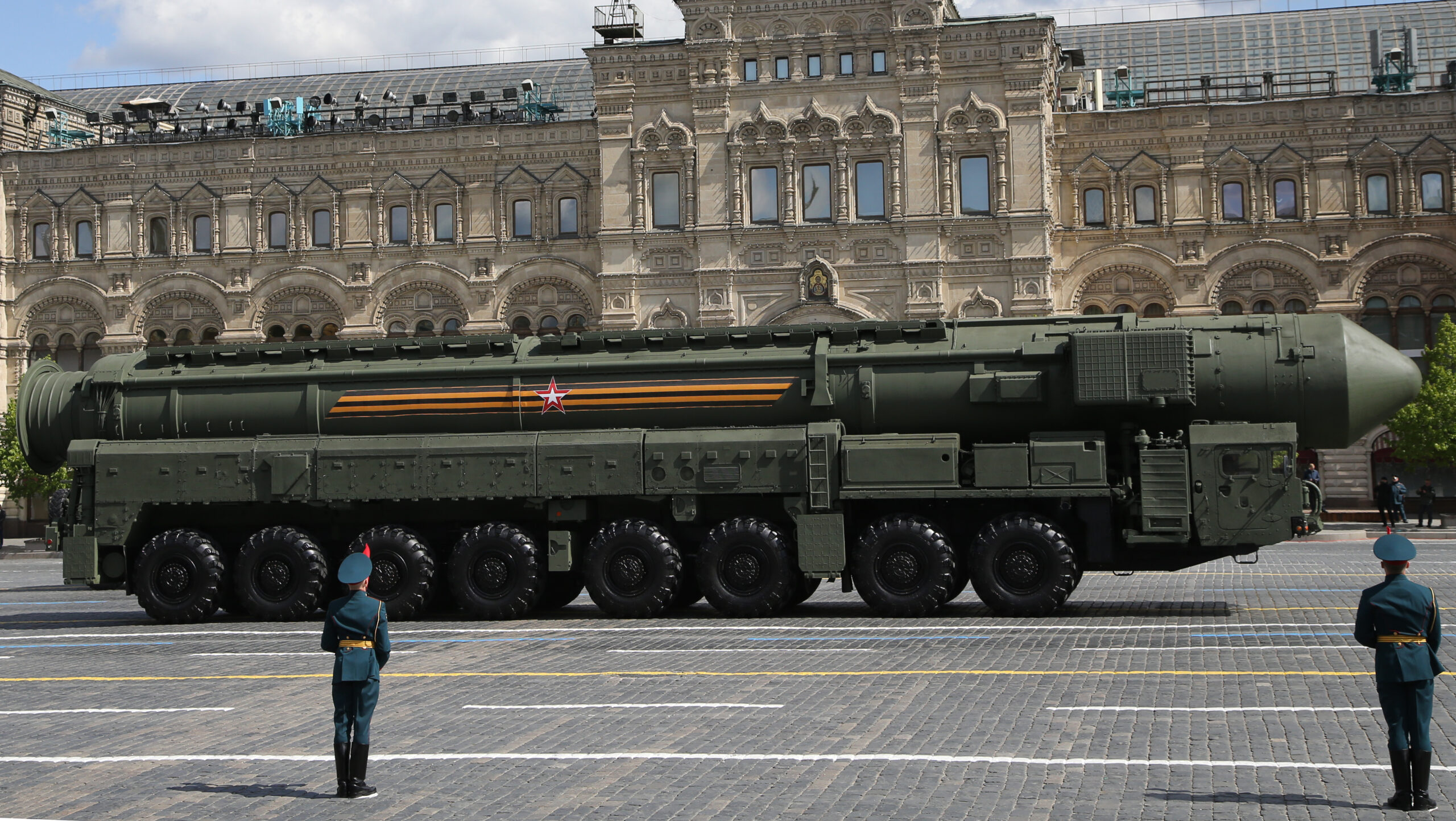

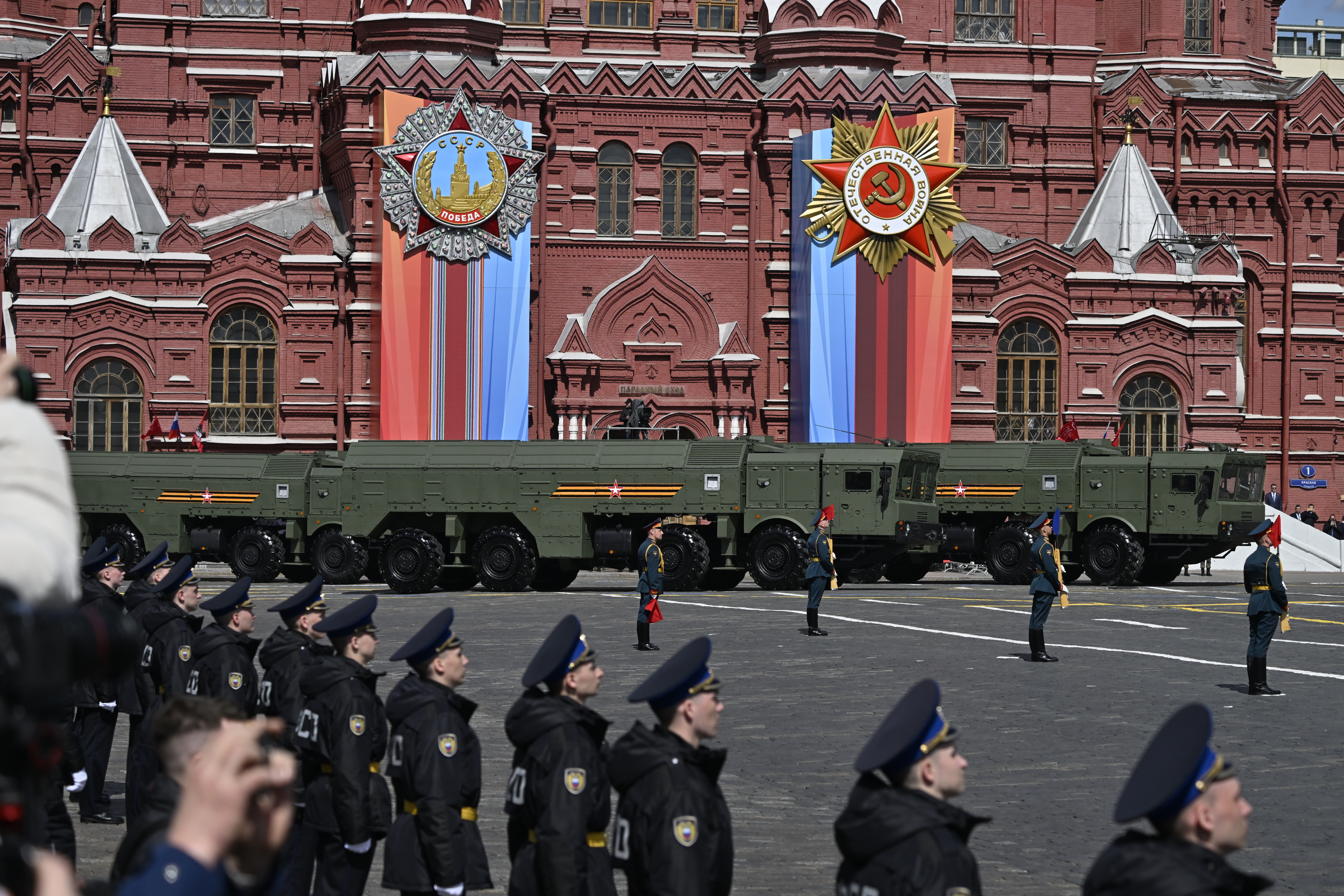
In comparison, the 2022 parade in Moscow, which took place less than three months after Russia launched its full-scale invasion, saw around 130 vehicles take part, itself a significant reduction over the 2021 event, which featured close to 200.
Of the vehicles that did appear in Red Square this year, the 10 or so Z-STS Akhmat armored tactical vehicles were apparently not from Russian Armed Forces’ stocks but belong to paramilitary forces fighting alongside Russia under the Chechen leader Ramzan Kadyrov.
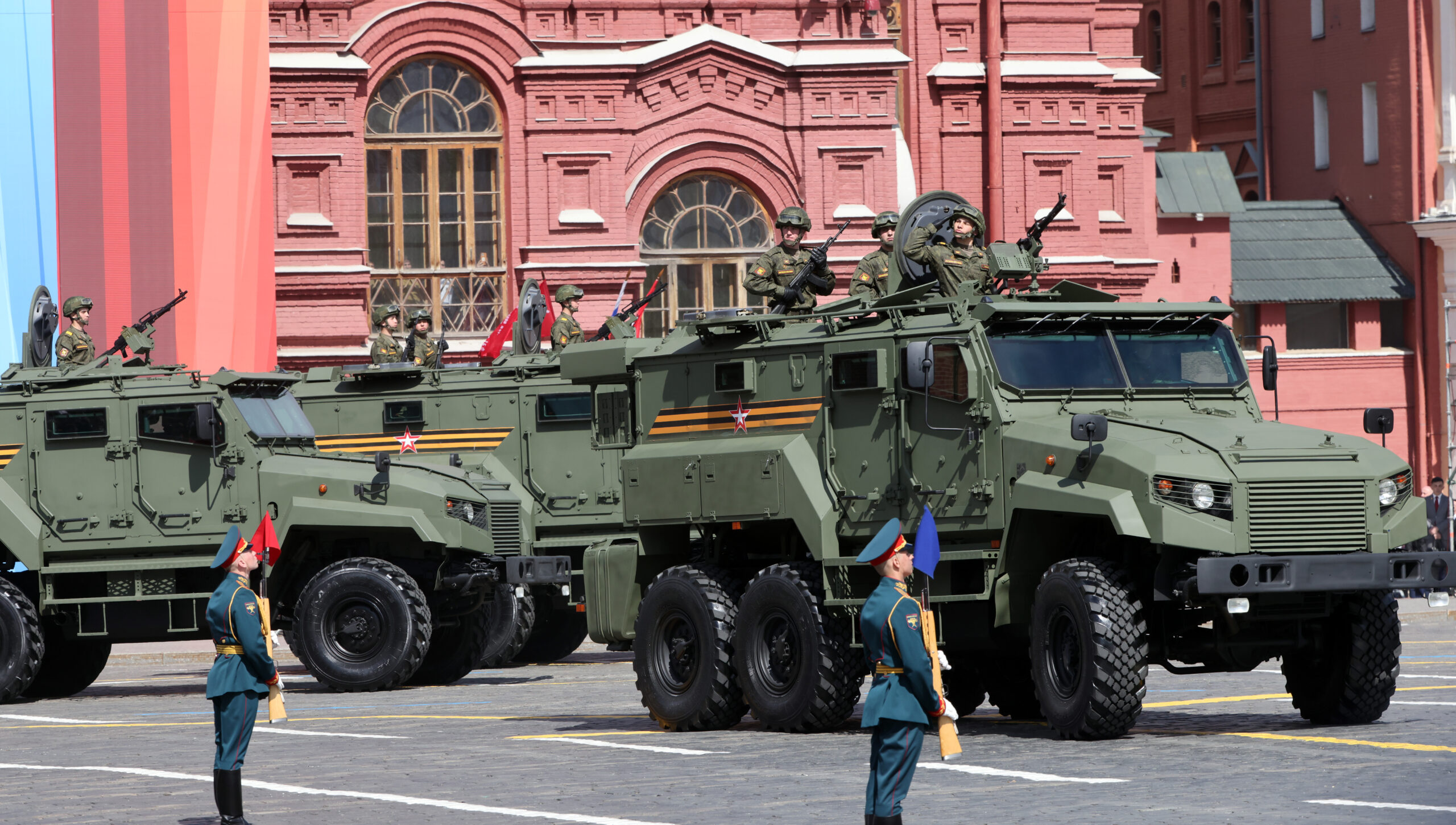
There was no aerial flypast of Moscow at all this year, although no reason was given for its absence. This is the second year in a row that no aircraft were present in the skies over the capital, with official statements last year blaming poor weather for the no-show. In 2021, a total of 76 aircraft participated.
Taken together, this all points to the fact that the Russian Armed Forces, 440 days since the full-scale invasion, still very much require all available resources while struggling to make a meaningful impact on the battlefield. This is a situation very well summed up in the intense fighting around the eastern Ukrainian city of Bakhmut, which, for months now, Russia has sought to capture, while costing thousands of lives on both sides.
Speaking today, Ukrainian President Volodymyr Zelensky claimed that Russia had planned on capturing Bakhmut before the May 9 Victory Day parade.
“They were not able to capture Bakhmut, this was the last important military operation that they wanted to complete by the Ninth of May,” Zelensky said.
The demand for airpower and ground-based air defenses, in particular, helps explain the absence of these traditional components of the Moscow parade, while the lines of tanks and armored fighting vehicles that normally rolled past the Russian president and onlookers are very clearly required on the battlefield.
Indeed, such is the demand for fighting vehicles of this kind that Russia has been forced to bring out of storage Cold War-era types including the T-62 tank, with even older T-54/55s (the basic design of which dates from the late 1940s) have also returned to war in at least some capacity.
A video from earlier this year, apparently showing T-54/55 tanks being transported from the 1295th Central Tank Reserve and Storage Base in Arsenyev, in the Russian Far East:

The fact that tanks of this vintage are being brought out of retirement to help the Russian war effort is even more alarming considering the continued absence of the country’s latest T-14 Armata main battle tanks, a much-hyped design that has supposedly seen combat trials in Syria but has not yet been noted in Ukraine. The T-14, which has regularly appeared in Moscow parades in recent years was also entirely absent from this year’s event.
With the T-14 seemingly yet to enter combat in Ukraine, older tank designs have been bearing the brunt of the fighting, with open-source intelligence suggesting more than 1,900 Russian tanks lost since the beginning of the invasion. This is a significant portion of the roughly 3,000 operational tanks thought to be available to the Russian Armed Forces at the start of the campaign, and the real number of losses is almost certainly markedly bigger still.
On top of those complete losses, many more modern Russian tanks that were not captured or destroyed have likely become unserviceable simply due to a lack of parts, especially when it comes to more advanced technology imported components, which have also been affected by sanctions.
As sanctions bite, the possibility of replacing lost tanks with new-production vehicles is also not straightforward, at least in anything close to the numbers required, which has likely been a key driver in the T-62 and T-54/55 being reactivated.
Reflecting all these problems, Dmitry Medvedev, a former Russian President and close Putin ally who is currently Deputy Chairman of the Security Council of Russia, has, in the past, made implicit threats to bring officials from state-run defense industries up on criminal charges for failing to meet production goals. It’s telling that those threats were made during a visit by Medvedev to the country’s main tank plant in Nizhny Tagil.
The absence of heavy armor and many other key weapons systems at the Moscow parade today is therefore hardly surprising but it also takes on additional relevance now that many are expecting a large-scale Ukrainian counteroffensive. In preparation for this, Russia has already dug in considerable forces in the regions of Ukraine that it occupies, and tanks and armored fighting vehicles will play a major role on both sides. However, heavy losses on the Russian side, coupled with the arrival of more modern and capable Western tanks on the Ukrainian side, could help tilt the balance in Ukraine’s favor.
As well as the reduced size, and the concerns about the course of the war in Ukraine, this year’s Moscow parade was tempered by an apparent drone attack on the Kremlin itself, last week, an event that we covered at the time.
On May 3, videos emerged showing the apparent drones striking at the dome of the Kremlin’s Senatsky Dvorets. Russian officials attributed the incident to an attack by Ukraine, although Ukraine’s president denied Kyiv’s involvement in the incident. There has also been no shortage of speculation that it may have been a calculated move by Russia, to justify an attack of its own or perhaps to further generate pro-war feelings on the domestic front.
Whatever the truth behind the drone incident, it hardly looks good for Russia, especially considering that it came a matter of days before the Victory Day parade.
Russia’s official Presidential Press Service stated: “We view these actions as a planned terrorist attack and an assassination attempt targeting the President, carried out ahead of Victory Day and the May 9 Parade, where foreign guests are expected to be present, among others.”
With fears — whether genuine or not — now circling around the safety of the Russian president, it’s perhaps also not entirely unexpected that today’s parade was a muted affair. Indeed, there had been some speculation that the parade in Moscow might be canceled altogether.
At the same time, Ukraine has shown on multiple occasions in the past that it is more than capable of attacking Russian territory, as we have repeatedly reported numerous incidents where Russian towns along the border and even targets much further beyond have come under attack by various means. On one occasion in February, a Ukrainian-made drone came within 70 miles of Moscow, something you can read more about here.
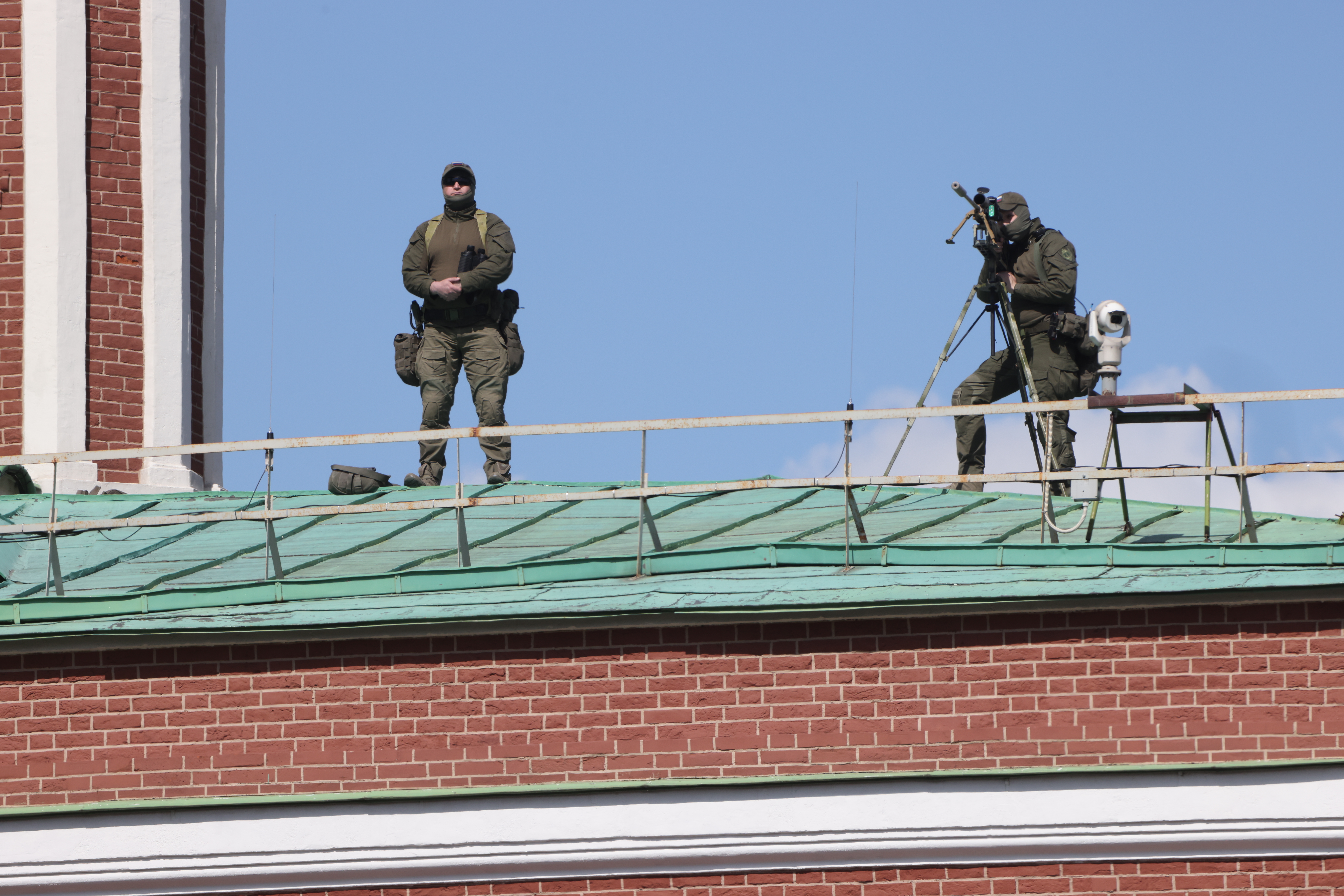
Long before last week’s apparent drone attack, Russia had begun bolstering the capital’s air defenses in anticipation of some kind of attack there, including installing a Pantsir air defense system on top of at least two different government buildings in Moscow, including the Ministry of Defense’s headquarters in January. You can read more about that in our coverage here.
As a very important date in the Russian calendar, and especially in service of the kind of nationalistic fervor that Putin has sought to mobilize to support the war in Ukraine, Victory Day puts the Russian Armed Forces squarely under the spotlight. But as a means of demonstrating Russia’s military prowess, this year’s event has, perhaps more than anything, brought into sharp focus the Kremlin’s continued travails in Ukraine, and the adverse effect that these have had on the armed forces.
Contact the author: thomas@thewarzone.com
